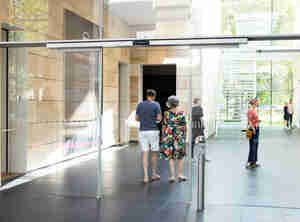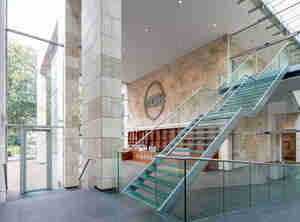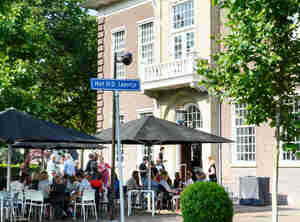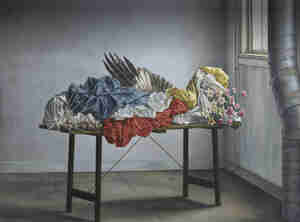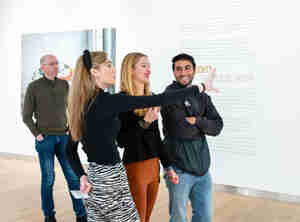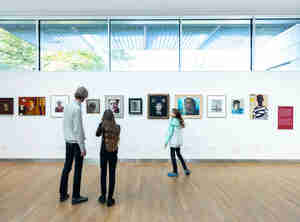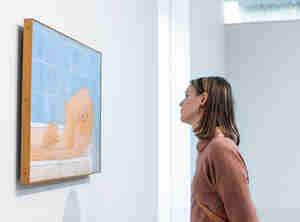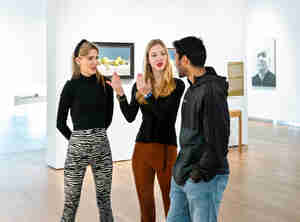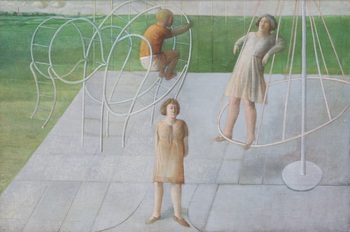- Plan your visit
- See and do
- Collection
- About us

Go back
Walter Nobbe
Street Worker, 1979 - 1980
From 1973 onward, Walter Nobbe (1941-2005) no longer chose female and childlike figures, but men as his models instead models. He found the contemplation and tranquillity he wished to evoke in his work in the compact and flat male body.
Street Worker features a young man with a bare torso – a verti
...
cal plane in front of a brick wall. What is striking is that we cannot see what kind of work he is doing; all that is visible is a fragment of his gloves. His sunburnt arms, chest and belly are leaner than you would expect from a street worker. The necklace with medallion also lends the boy an air of vulnerability.
Born in Malang on Java, Nobbe received a Western upbringing. When he was eight years old, he and his family moved to the Netherlands. After school, he wanted to pursue a career in art and studied at the Royal Academy of Art in The Hague, obtaining his teaching certificate in drawing in 1963. Initially, he made a living as a drawing instructor at the Domestic Science School and later at the Academy of Visual Arts in Rotterdam. From 1973, he divided his time between painting, drawing, watercolouring, and designing costumes and sets for various dance companies.
Long-term loan from the Cultural Heritage Agency.
Text: Boris Ariaens, guide and museum host
Artist
Walter Nobbe
Title
Street Worker
Year
1979 -
1980
Technique
Oil and tempera on panel
Size
52.8 x 52.5 cm (h x w)
Type of object
Painting
Copyright
© Pictoright
This work is protected by copyright. You need permission from the creator or his heir to download, edit, copy or publish it.
